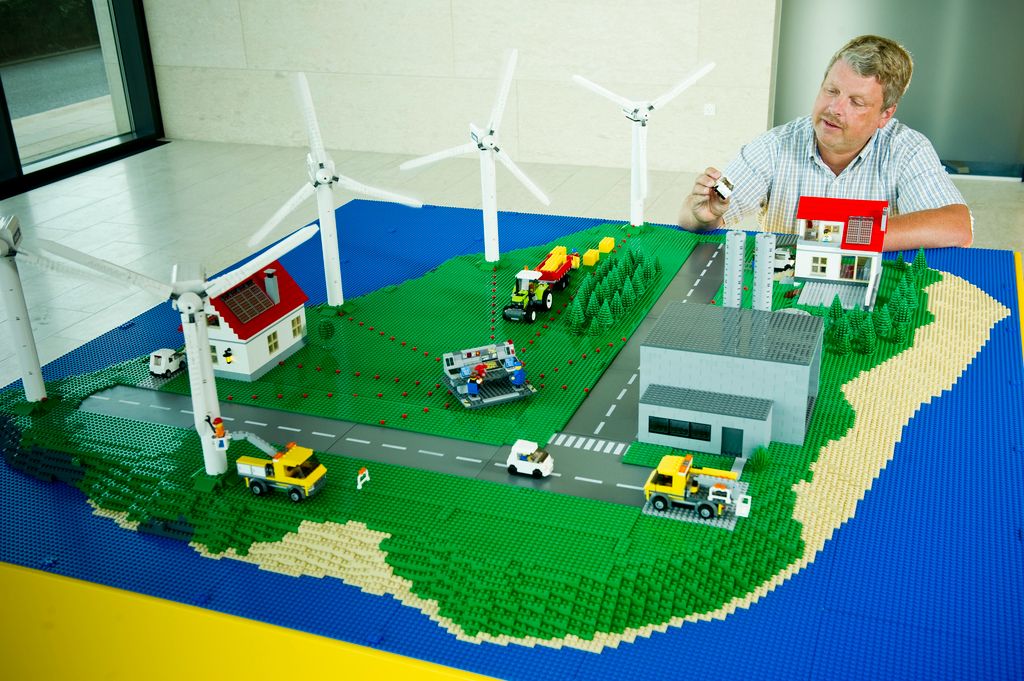Response Paper: Will Society "Collapse"?

Cover Photo: Lego Model of Bornholm EcoGrid Project (Source: SmarterCities Tumblr)
I am currently studying to get a Master's degree and I am taking a course on sustainability at the moment. Every week the professor assigns us readings to do and gives us a question to write a personal response about after the readings. I will be posting these after they are handed back to us to make sure everybody in the class has handed them in. This week, we read
- Collapse by Jared Diamond
- Accelerated modern human–induced species
losses: Entering the sixth mass extinction, by Ceballos et. al. (DOI: 10.1126/sciadv.1400253, free) - The New World of the Anthropocene, by Zalasiewicz et. al. (DOI: 10.1021/es903118j, free)
- A safe operating space for humanity, by Rockström et. al. (DOI: 10.1038/461472a, paywall)
- Tragedy of the Commons, by Garrett Hardin (DOI: 10.1126/science, free)
Reading through Jared Diamond’s Collapse and the rest of the academic papers provides a bleak outlook for the fate of the human population. Unfortunately, individual societies will certainly have to collapse as more vulnerable countries succumb to nature. Garrett Hardin’s The Tragedy of the Commons successfully argues that systems relying on nature for self-regulation only work at low population densities. The other studies serve to scientifically justify the logical argument that Hardin sets forth, and Diamond demonstrates the effects on a local level. However, while I do believe that technical solutions will not be enough to solve the environmental problems facing the Earth by themselves, they ultimately will minimize the changes people face
in their lives.
Focusing on a much smaller scale, Montana exemplifies many of the problems that Hardin describes. The population density is increasing, but into sprawl as opposed to high-density urban living. As a conservative state wary of government intrusion, Diamond argues that land use distribution is a disaster and that government regulations attempting to control pollution arrived very late. The agriculture sector is particularly bad as external economic forces combined with groundwater pollution have decimated the industry in-state. Already, a certain way of life is disappearing in Montana just as it is in other communities across the globe.
Admittedly, Montana’s residents were too sparsely populated for it to feel like a full society disintegrating, but the densification of the state begins to cause the same problems Hardin describes. Developers are destroying the areas that attract people to Montana for personal financial gain because the only real limitation currently is capitol. Perhaps my Danish heritage biases me, but this is one of the less-technological methods that will at least begin to combat environmental degradation. When population centers are located close to former mining areas, there are inevitable economic consequences for both local and global societies. Either the government (the taxpayers) will have to pay for the cost of cleanup, or the government (again, the taxpayers) will have to cover the health care costs of the people living there. Without some kind of intervention, Montana’s unsustainable land development will lead to a societal
collapse on a smalls scale.
While not mentioned in any of the papers or in Collapse, Kiribati almost perfectly represents the devastation that can happen with unrestricted population growth in a small area combined with the effects of climate change. Due to rising sea levels, water contamination, and coastal erosion mean the main island of Tarawa could become uninhabitable by 2050. While Safe Operating Space does not find chemical pollution and global freshwater use to be issues on a world scale, they threaten the nature of life in Kiribati. There are certainly some parallels with Easter Island, but the rising sea levels are not the fault of the locals. Their society is definitely on the brink of collapse, and there is sadly little hope beyond emigration for the future.
Regardless, I remain an optimist. We clearly live in the age of the Anthropocene where humans have had an immense impact on the environment. The influence has been particularly bad since the industrial revolution, although there were massive landscape changes before that as Zalasiewicz et al note in The New World of the Anthropocene. The Tragedy of the Commons does not extensively consider how technological solutions can reduce the need for behavioral change. Countries like Denmark show that technological habits do not need to change significantly to reduce emissions. An old Danish island, Bornholm, is using new systems that adjust demand to meet available supply when renewable energy sources create more electricity than the total current grid load. Demand response has been reasonably effective, as it turns on things like washing machines and electric heating only when the supply is available as long as the parameters fit within certain bounds. Many of these advancements are possible in both developed and developing countries. If research like this can spread across the world, global society’s collapse may not be so inevitable.